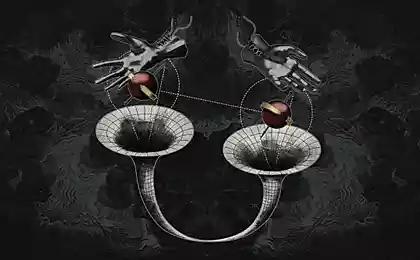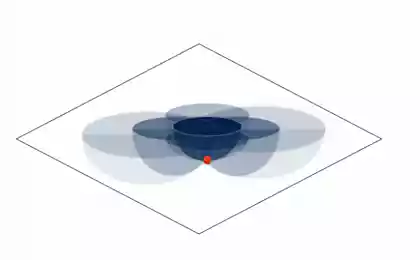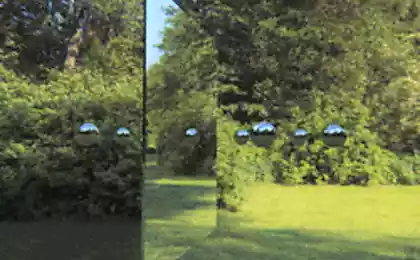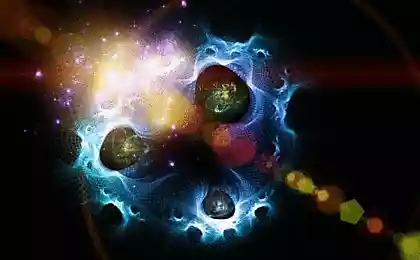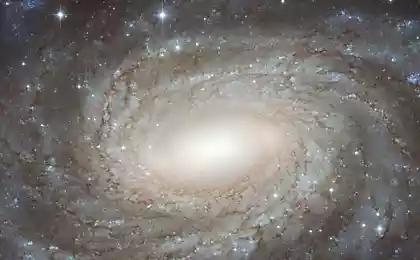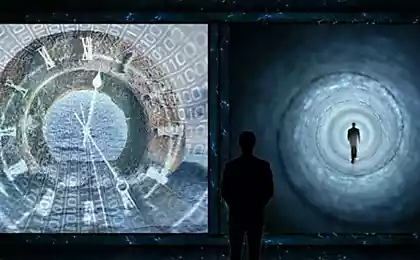748
Quantum entanglement and wormholes may be closely related
When albert Einstein was amazed at the "creepy" long range connections between particles, he thought about his General theory of relativity. A century of Einstein's theory describes how gravity arises when massive objects warp the fabric of space and time. Quantum entanglement, the Einstein a terrible source of fear usually involves tiny particles, which have little effect on the gravity. A speck of dust deforms the mattress exactly the same as a subatomic particle that warps space.
However, physicist mark van Raamsdonk suspects that the confusion and space-time actually connected. In 2009, he calculated that space without involvement would not have been able to hold my own. He wrote a paper, which implies that quantum entanglement is the needle which stitches together the tapestry of space-time.
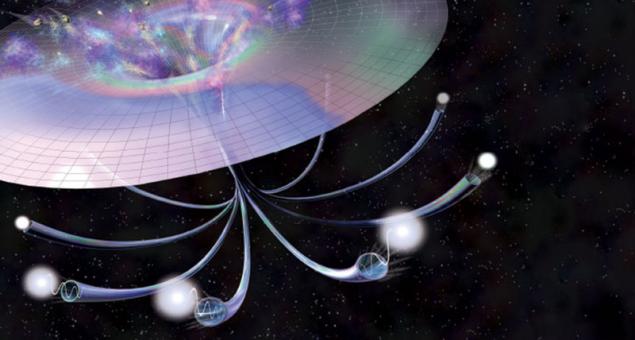
Many magazines refused to publish his work. But after years of skepticism the original study the idea that entanglement forms a space-time, has become one of the hottest trends in the field of physics.
"Leaving the deep foundations of physics, everything indicates that space should be related to confusion," says John Preskill, a theoretical physicist from Caltech.In 2012, there is another provocative work, representing the paradox of entangled particles inside and outside a black hole. Less than a year two experts in this area suggested a radical solution: entangled particles connected by wormholes, tunnels in space-time, introduced by Einstein, which is currently equally often appear on the pages of journals in physics and in science fiction. If this assumption is true, confusion is not terrible long-range connection, which I think Einstein is a very real bridge between distant points in space.
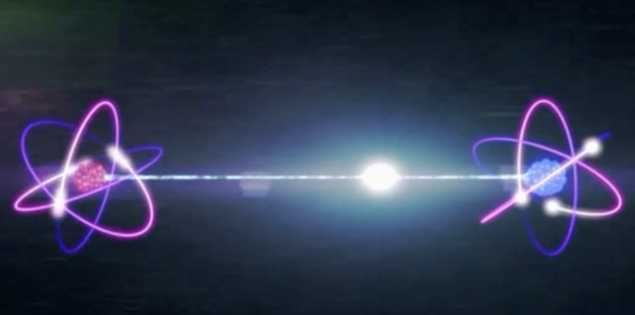
Many scholars find these ideas worthy of attention. In recent years, the physics of seemingly unrelated specialties together in this field of entanglement, space and wormholes. Scientists who were once the focus is on creating error free quantum computers, today ponder whether the universe is a quantum computer, which is quietly programs the space-time in the complex web of entanglements. "Everything is progressing in an incredible way," says van Raamsdonk from the University of British Columbia in Vancouver.
Physicists have high hopes of where they will lead is the connection of space-time with confusion. OTOH, brilliantly describes how the space-time; new studies can lift the veil on the origin of space-time and what it looks like on the smallest scales, which lies in the power of quantum mechanics. The confusion might be the secret ingredient that will unite these while that associated region in a theory of quantum gravity, allowing scientists to understand the conditions inside a black hole and the state of the Universe in the first moments after the Big Bang.
Holograms and a can of soupEpiphany van Raamsdonk in 2009 did not materialize out of thin air. It is rooted in the holographic principle, the idea that the boundary that limits the amount of space that can contain all of the information it contained. If you apply the holographic principle to daily life, a curious employee can perfectly reconstruct all that is in the office — piles of papers, family pictures, toys in the corner and even files on your computer's hard drive — just looking at the outer wall of the square office.
This idea is controversial, given the fact that the walls have two dimensions, and the interior of the office three. But in 1997 Juan Maldacena, then string theorist from Harvard, led an intriguing example of what the holographic principle could reveal about the Universe.
He began with the anti-de-sitter space, which is reminiscent of space-time, which is dominated by gravity, but has a number of strange attributes. It is curved in such a way that the flash light is emitted in a certain place, will eventually return from where it appeared. And although the universe is expanding, anti-de-sitter space is not being stretched or compressed. Because of these characteristics a piece of anti-de-sitter space with four dimensions (three spatial and one temporal) may be surrounded by a three-dimensional border.
Maldacena applied to the cylinder anti-de-sitter space-time. Each horizontal slice of a cylinder represents the state space at a given time, whereas the vertical dimension of the cylinder represents time. Maldacena surrounded his cylinder boundary for the hologram; if anti-de-sitter space was a can of soup, the border would be a label.
At first glance it seems that this boundary (the label) has nothing to do with the filling of the cylinder. Edge "label", for example, follows the rules of quantum mechanics, not gravity. And yet gravity describes space within the contents of "soup." Maldacena showed that the label and the soup were one and the same; the quantum interactions at the border perfectly describe anti-de-sitter space, which closes the border.
"These two theories seem quite different, but describe exactly the same thing," says Preskill.
Maldacena added confusion in the holographic equation in 2001. He introduced space in two cans of soup, each of which contains a black hole. Then created the equivalent of a homemade phone out of cups that connect black holes with wormholes — tunnels through space-time first proposed by Einstein and Nathan Rosen in 1935. Maldacena was looking for a way to create the equivalent of such a connection of space-time on the labels of cans. The trick, as he understood, was in confusion.
Like a wormhole, quantum entanglement connects objects that have no apparent relationship. The quantum world is a vague place: an electron can spin in both directions at the same time, being in a state of superposition until measurement will not provide an accurate answer. But if two electrons entangled, measurement of the spin of one allows the experimenter to know the spin of the other electron, even if the partner electron is in a state of superposition. This quantum connection remains even if the electrons would separate meters, kilometers or light years.
Maldacena showed that using entanglement of particles on a single label particle to another is quantum-mechanically describe the connection wormhole cans. In the context of the holographic principle, entanglement is equivalent to the physical linking of pieces of space-time together.
Inspired by this relationship of involvement with space-time, van Raamsdonk wondered how big a role the involvement can play in shaping the space-time. He was presented with the clean label on the jar with the quantum soup: a white, corresponding to the empty disk anti-de sitter space. But he knew that, according to the foundations of quantum mechanics, empty space is never truly empty. It is filled with pairs of particles that pop up and disappear. And these small particles confusing.
So van Raamsdonk drew an imaginary bisector on the holographic label and then mathematically broke quantum entanglement between particles on one half of the label and the particle on the other. He found that the appropriate drive anti-de-sitter space began to be divided in half. If entangled particles were the hooks that hold the fabric of space and time; without them, the space-time shatters into pieces. As soon as van Raamsdonk lowered the degree of entanglement, the part connected to the separated regions of the space was thinner, like a rubber thread, stretching from gum.
"This got me thinking that the presence of space begins with the presence of entanglement".It was a bold statement, and it took time to work van Raamsdonk published in General Relativity and Gravitation in 2010, has attracted wide attention. The fire of interest are already in 2012, when four physicists from the University of California at Santa Barbara wrote a paper challenging common beliefs on the event horizon, the point of no return of a black hole.
The truth, hidden by a firewall
In the 1970's physicist Stephen Hawking has shown that pairs of entangled particles — the same species that van Raamsdonk later analyzed in its quantum frontier could fall into the event horizon. One falls into the black hole and the other escapes with the so-called Hawking radiation. This process gradually erodes the mass of the black hole, eventually leading to her death. But if black holes disappear, along with it should disappear and a record of everything that fell inside. Quantum theory says that information cannot be destroyed.
To 90-th years of several theoretical physicists, including Leonard Susskind from Stanford, proposed a solution to this problem. Yes, they said, matter and energy falling into a black hole. But from the point of view of an external observer, this material never overcomes the event horizon; he seemed to be teetering on its brink. As a result, the event horizon becomes a holographic boundary containing all the information about the space inside the black hole. In the end, when the black hole evaporates, this information is leaked in the form of Hawking radiation. In principle, the observer can collect this radiation and recover all the information about the depths of a black hole.
In his work physics, 2012 Ahmed, Almari, Donald Marolf, James, Sally and Joseph Polchinski stated that in this picture something is wrong. For the observer trying to piece the puzzle together of what is inside a black hole, said one, all of the individual pieces of the puzzle particles of Hawking radiation must be entangled among themselves. Also Hakimova each particle needs to be entangled with its original partner, who fell into a black hole.
Unfortunately, one of confusion is not enough. Quantum theory says that in order for the entanglement present between all particles outside the black hole, should be excluded the involvement of these particles with particles inside the black hole. In addition, physicists have found that the gap one of the entanglements would create an impenetrable energy wall, the so-called firewall at the event horizon.
Many physicists had doubts that black holes actually evaporate anything that tries to get inside. But the very possibility of the existence of the firewall leads to disturbing thoughts. Earlier physicists had already begun to think about what it looks like the space inside a black hole. Now they are not sure about whether black holes is "in" at all. All seemed resigned, says Preskill.
But Susskind not resigned. He spent years trying to prove that information does not disappear inside a black hole; today, he is also convinced that the idea of the firewall is wrong, but to prove this has not yet been able. One day he received a mysterious letter from Maldacena: "it was little — Susskind. Only ER = EPR". Maldacena, now working at the Institute for advanced study at Princeton, thinking about his work with cans of soup 2001 and became interested in whether the wormhole to allow a jumble of confusion generated by the issue of a firewall. Susskind quickly picked up the idea.
In an article published in the German journal Fortschritte der Physik in 2013, Maldacena and Susskind said that the wormhole is technically a bridge of Einstein-Rosen, or ER — is space-time equivalent of quantum entanglement. (Under EPR to understand the experiment of Einstein-Podolsky-Rosen, which was to dispel the mythological quantum entanglement). This means that every particle of Hawking radiation, regardless of how far it is from the beginning directly linked to the depths of the black hole via a shortcut through space-time.
"If moving through a wormhole, distant things are not quite so far," says Susskind.Susskind and Maldacena offered to collect all the particles of Hawking and push them together until they are quanta collapse into the dark black hole. This black hole would be confused, and hence are connected by a wormhole with the original black hole. This trick turned a tangled mess Hakimovich particles paradoxically entangled with the black hole between them is two black holes connected by a wormhole. Overload confusion is resolved, and the problem firewall was exhausted.
Not all scientists have jumped on the bandwagon of the tram ER = EPR. Susskind and Maldacena recognize that they have to do more work to prove the equivalence of wormholes and entanglement. But after thinking it through the consequences of the paradox of the firewall, many physicists agree that space-time inside the black hole owes its existence to confusion with radiation from the outside. This is an important insight, says Preskill because it also means that the fabric of the space-time Universe, including the piece that we occupy, is a product of quantum spooky action.
Space computer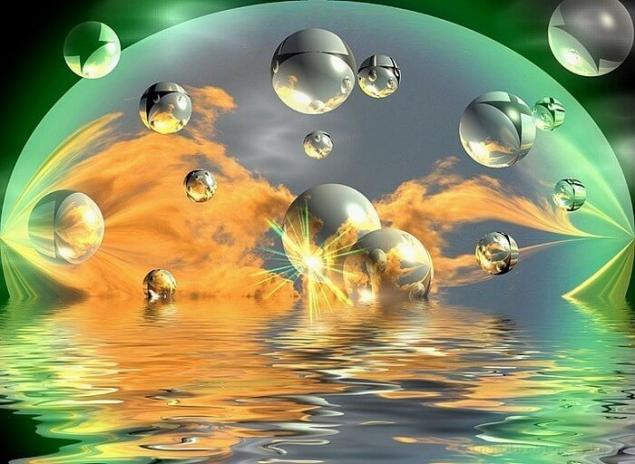
It's one thing to say that the universe constructs the space-time through entanglement; another to show how the universe does it. This difficult task began of Preskill and colleagues who agreed to consider the space as a huge quantum computer. Almost twenty years scientists have been working on building quantum computers that use the information encoded in the entangled elements, such as photons or tiny chips to solve problems that traditional computers can't handle. Team Priscilla uses the knowledge obtained as a result of these attempts to predict how the individual parts inside a can of soup could affect filled with confusion the label.
Quantum computers work by exploiting the components that are in a superposition of States, as carriers of data — they can be zeros and ones simultaneously. But the state of superposition is very fragile. Excess heat can ruin the condition and all contained in it quantum information. These losses of information that Preskill compares with torn pages in the book seem unavoidable.
But physicists responded by creating a Protocol for quantum error correction. Instead of relying on one particle to store the quantum bits, scientists share data between multiple entangled particles. The book, written in the language of quantum error correction will be complete nonsense, says Preskill, but all its content can be recovered even if half the pages come up missing.
Quantum error correction has attracted much attention in recent years, but now Preskill and his colleagues suspect that the nature invented it long ago. In June, in the journal of High Energy Physics, Preskill and his team showed how the entanglement of multiple particles in holographic border perfectly describes one particle, drawn by gravity inside a piece of anti-de-sitter space. Maldacena says that this discovery may lead to better understanding of how the hologram encodes all the details of space-time that surrounds.
Physicists recognize that their thoughts have a long way to go to match reality. While anti-de-sitter space offers physicists the advantage of working with a well-defined boundary of the Universe is not such a clear label on the can of soup. The fabric of space-time space is expanding since the Big Bang and continues to do so at an increasing pace. If you send a beam of light into space, he won't turn around and come back; he will fly. "It is not clear how to define a holographic theory of our Universe, wrote Maldacena in 2005. — Just no convenient place to embed the holograms".
However, as strange as that may sound, all these holograms, a can of soup and wormholes, they can become promising tracks, which will lead to the merging of quantum spooky action with the geometry of space-time. In his work on the wormholes of Einstein and Rosen discussed the possible quantum effects, but not held connection with his earlier works on entanglement. Today, that relationship could help unite quantum mechanics General relativity in a theory of quantum gravity. Armed with such a theory, physicists could make out the mysteries of the state of the young Universe, when matter and energy were contained in an infinitely small point in space. published
P. S. And remember, just changing your mind - together we change the world! ©
Join us in Facebook , Vkontakte, Odnoklassniki
Source: hi-news.ru
However, physicist mark van Raamsdonk suspects that the confusion and space-time actually connected. In 2009, he calculated that space without involvement would not have been able to hold my own. He wrote a paper, which implies that quantum entanglement is the needle which stitches together the tapestry of space-time.

Many magazines refused to publish his work. But after years of skepticism the original study the idea that entanglement forms a space-time, has become one of the hottest trends in the field of physics.
"Leaving the deep foundations of physics, everything indicates that space should be related to confusion," says John Preskill, a theoretical physicist from Caltech.In 2012, there is another provocative work, representing the paradox of entangled particles inside and outside a black hole. Less than a year two experts in this area suggested a radical solution: entangled particles connected by wormholes, tunnels in space-time, introduced by Einstein, which is currently equally often appear on the pages of journals in physics and in science fiction. If this assumption is true, confusion is not terrible long-range connection, which I think Einstein is a very real bridge between distant points in space.

Many scholars find these ideas worthy of attention. In recent years, the physics of seemingly unrelated specialties together in this field of entanglement, space and wormholes. Scientists who were once the focus is on creating error free quantum computers, today ponder whether the universe is a quantum computer, which is quietly programs the space-time in the complex web of entanglements. "Everything is progressing in an incredible way," says van Raamsdonk from the University of British Columbia in Vancouver.
Physicists have high hopes of where they will lead is the connection of space-time with confusion. OTOH, brilliantly describes how the space-time; new studies can lift the veil on the origin of space-time and what it looks like on the smallest scales, which lies in the power of quantum mechanics. The confusion might be the secret ingredient that will unite these while that associated region in a theory of quantum gravity, allowing scientists to understand the conditions inside a black hole and the state of the Universe in the first moments after the Big Bang.
Holograms and a can of soupEpiphany van Raamsdonk in 2009 did not materialize out of thin air. It is rooted in the holographic principle, the idea that the boundary that limits the amount of space that can contain all of the information it contained. If you apply the holographic principle to daily life, a curious employee can perfectly reconstruct all that is in the office — piles of papers, family pictures, toys in the corner and even files on your computer's hard drive — just looking at the outer wall of the square office.
This idea is controversial, given the fact that the walls have two dimensions, and the interior of the office three. But in 1997 Juan Maldacena, then string theorist from Harvard, led an intriguing example of what the holographic principle could reveal about the Universe.
He began with the anti-de-sitter space, which is reminiscent of space-time, which is dominated by gravity, but has a number of strange attributes. It is curved in such a way that the flash light is emitted in a certain place, will eventually return from where it appeared. And although the universe is expanding, anti-de-sitter space is not being stretched or compressed. Because of these characteristics a piece of anti-de-sitter space with four dimensions (three spatial and one temporal) may be surrounded by a three-dimensional border.
Maldacena applied to the cylinder anti-de-sitter space-time. Each horizontal slice of a cylinder represents the state space at a given time, whereas the vertical dimension of the cylinder represents time. Maldacena surrounded his cylinder boundary for the hologram; if anti-de-sitter space was a can of soup, the border would be a label.
At first glance it seems that this boundary (the label) has nothing to do with the filling of the cylinder. Edge "label", for example, follows the rules of quantum mechanics, not gravity. And yet gravity describes space within the contents of "soup." Maldacena showed that the label and the soup were one and the same; the quantum interactions at the border perfectly describe anti-de-sitter space, which closes the border.
"These two theories seem quite different, but describe exactly the same thing," says Preskill.

Maldacena added confusion in the holographic equation in 2001. He introduced space in two cans of soup, each of which contains a black hole. Then created the equivalent of a homemade phone out of cups that connect black holes with wormholes — tunnels through space-time first proposed by Einstein and Nathan Rosen in 1935. Maldacena was looking for a way to create the equivalent of such a connection of space-time on the labels of cans. The trick, as he understood, was in confusion.
Like a wormhole, quantum entanglement connects objects that have no apparent relationship. The quantum world is a vague place: an electron can spin in both directions at the same time, being in a state of superposition until measurement will not provide an accurate answer. But if two electrons entangled, measurement of the spin of one allows the experimenter to know the spin of the other electron, even if the partner electron is in a state of superposition. This quantum connection remains even if the electrons would separate meters, kilometers or light years.
Maldacena showed that using entanglement of particles on a single label particle to another is quantum-mechanically describe the connection wormhole cans. In the context of the holographic principle, entanglement is equivalent to the physical linking of pieces of space-time together.
Inspired by this relationship of involvement with space-time, van Raamsdonk wondered how big a role the involvement can play in shaping the space-time. He was presented with the clean label on the jar with the quantum soup: a white, corresponding to the empty disk anti-de sitter space. But he knew that, according to the foundations of quantum mechanics, empty space is never truly empty. It is filled with pairs of particles that pop up and disappear. And these small particles confusing.
So van Raamsdonk drew an imaginary bisector on the holographic label and then mathematically broke quantum entanglement between particles on one half of the label and the particle on the other. He found that the appropriate drive anti-de-sitter space began to be divided in half. If entangled particles were the hooks that hold the fabric of space and time; without them, the space-time shatters into pieces. As soon as van Raamsdonk lowered the degree of entanglement, the part connected to the separated regions of the space was thinner, like a rubber thread, stretching from gum.
"This got me thinking that the presence of space begins with the presence of entanglement".It was a bold statement, and it took time to work van Raamsdonk published in General Relativity and Gravitation in 2010, has attracted wide attention. The fire of interest are already in 2012, when four physicists from the University of California at Santa Barbara wrote a paper challenging common beliefs on the event horizon, the point of no return of a black hole.
The truth, hidden by a firewall

In the 1970's physicist Stephen Hawking has shown that pairs of entangled particles — the same species that van Raamsdonk later analyzed in its quantum frontier could fall into the event horizon. One falls into the black hole and the other escapes with the so-called Hawking radiation. This process gradually erodes the mass of the black hole, eventually leading to her death. But if black holes disappear, along with it should disappear and a record of everything that fell inside. Quantum theory says that information cannot be destroyed.
To 90-th years of several theoretical physicists, including Leonard Susskind from Stanford, proposed a solution to this problem. Yes, they said, matter and energy falling into a black hole. But from the point of view of an external observer, this material never overcomes the event horizon; he seemed to be teetering on its brink. As a result, the event horizon becomes a holographic boundary containing all the information about the space inside the black hole. In the end, when the black hole evaporates, this information is leaked in the form of Hawking radiation. In principle, the observer can collect this radiation and recover all the information about the depths of a black hole.
In his work physics, 2012 Ahmed, Almari, Donald Marolf, James, Sally and Joseph Polchinski stated that in this picture something is wrong. For the observer trying to piece the puzzle together of what is inside a black hole, said one, all of the individual pieces of the puzzle particles of Hawking radiation must be entangled among themselves. Also Hakimova each particle needs to be entangled with its original partner, who fell into a black hole.
Unfortunately, one of confusion is not enough. Quantum theory says that in order for the entanglement present between all particles outside the black hole, should be excluded the involvement of these particles with particles inside the black hole. In addition, physicists have found that the gap one of the entanglements would create an impenetrable energy wall, the so-called firewall at the event horizon.
Many physicists had doubts that black holes actually evaporate anything that tries to get inside. But the very possibility of the existence of the firewall leads to disturbing thoughts. Earlier physicists had already begun to think about what it looks like the space inside a black hole. Now they are not sure about whether black holes is "in" at all. All seemed resigned, says Preskill.
But Susskind not resigned. He spent years trying to prove that information does not disappear inside a black hole; today, he is also convinced that the idea of the firewall is wrong, but to prove this has not yet been able. One day he received a mysterious letter from Maldacena: "it was little — Susskind. Only ER = EPR". Maldacena, now working at the Institute for advanced study at Princeton, thinking about his work with cans of soup 2001 and became interested in whether the wormhole to allow a jumble of confusion generated by the issue of a firewall. Susskind quickly picked up the idea.
In an article published in the German journal Fortschritte der Physik in 2013, Maldacena and Susskind said that the wormhole is technically a bridge of Einstein-Rosen, or ER — is space-time equivalent of quantum entanglement. (Under EPR to understand the experiment of Einstein-Podolsky-Rosen, which was to dispel the mythological quantum entanglement). This means that every particle of Hawking radiation, regardless of how far it is from the beginning directly linked to the depths of the black hole via a shortcut through space-time.
"If moving through a wormhole, distant things are not quite so far," says Susskind.Susskind and Maldacena offered to collect all the particles of Hawking and push them together until they are quanta collapse into the dark black hole. This black hole would be confused, and hence are connected by a wormhole with the original black hole. This trick turned a tangled mess Hakimovich particles paradoxically entangled with the black hole between them is two black holes connected by a wormhole. Overload confusion is resolved, and the problem firewall was exhausted.
Not all scientists have jumped on the bandwagon of the tram ER = EPR. Susskind and Maldacena recognize that they have to do more work to prove the equivalence of wormholes and entanglement. But after thinking it through the consequences of the paradox of the firewall, many physicists agree that space-time inside the black hole owes its existence to confusion with radiation from the outside. This is an important insight, says Preskill because it also means that the fabric of the space-time Universe, including the piece that we occupy, is a product of quantum spooky action.
Space computer

It's one thing to say that the universe constructs the space-time through entanglement; another to show how the universe does it. This difficult task began of Preskill and colleagues who agreed to consider the space as a huge quantum computer. Almost twenty years scientists have been working on building quantum computers that use the information encoded in the entangled elements, such as photons or tiny chips to solve problems that traditional computers can't handle. Team Priscilla uses the knowledge obtained as a result of these attempts to predict how the individual parts inside a can of soup could affect filled with confusion the label.
Quantum computers work by exploiting the components that are in a superposition of States, as carriers of data — they can be zeros and ones simultaneously. But the state of superposition is very fragile. Excess heat can ruin the condition and all contained in it quantum information. These losses of information that Preskill compares with torn pages in the book seem unavoidable.
But physicists responded by creating a Protocol for quantum error correction. Instead of relying on one particle to store the quantum bits, scientists share data between multiple entangled particles. The book, written in the language of quantum error correction will be complete nonsense, says Preskill, but all its content can be recovered even if half the pages come up missing.
Quantum error correction has attracted much attention in recent years, but now Preskill and his colleagues suspect that the nature invented it long ago. In June, in the journal of High Energy Physics, Preskill and his team showed how the entanglement of multiple particles in holographic border perfectly describes one particle, drawn by gravity inside a piece of anti-de-sitter space. Maldacena says that this discovery may lead to better understanding of how the hologram encodes all the details of space-time that surrounds.
Physicists recognize that their thoughts have a long way to go to match reality. While anti-de-sitter space offers physicists the advantage of working with a well-defined boundary of the Universe is not such a clear label on the can of soup. The fabric of space-time space is expanding since the Big Bang and continues to do so at an increasing pace. If you send a beam of light into space, he won't turn around and come back; he will fly. "It is not clear how to define a holographic theory of our Universe, wrote Maldacena in 2005. — Just no convenient place to embed the holograms".
However, as strange as that may sound, all these holograms, a can of soup and wormholes, they can become promising tracks, which will lead to the merging of quantum spooky action with the geometry of space-time. In his work on the wormholes of Einstein and Rosen discussed the possible quantum effects, but not held connection with his earlier works on entanglement. Today, that relationship could help unite quantum mechanics General relativity in a theory of quantum gravity. Armed with such a theory, physicists could make out the mysteries of the state of the young Universe, when matter and energy were contained in an infinitely small point in space. published
P. S. And remember, just changing your mind - together we change the world! ©
Join us in Facebook , Vkontakte, Odnoklassniki
Source: hi-news.ru
New life of old things: 30 alterations, the results of which are really cool
Autonomous heat supply of the farm


